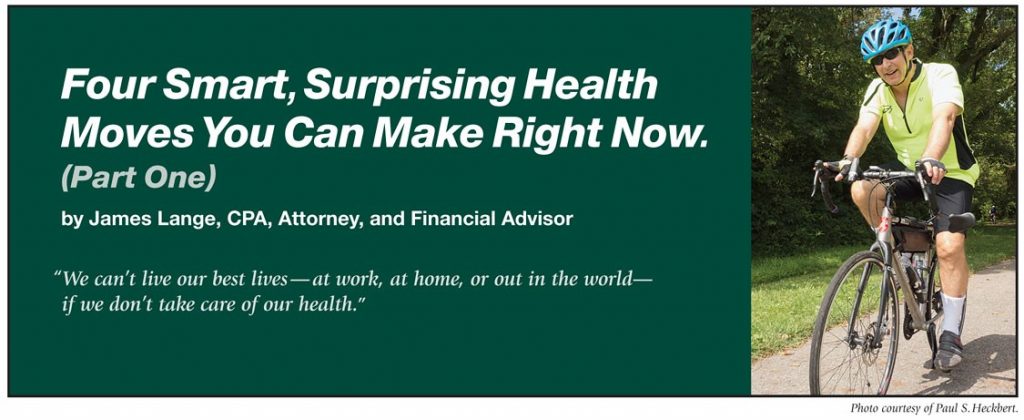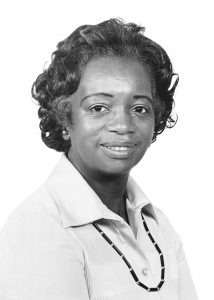Table of Contents
Four Smart, Surprising Health Moves You Can Make Right Now
Part One
It’s time to revisit a fact we know all too well but frequently ignore: We can’t live our best lives—at work, at home, or out in the world—if we don’t take care of our health.
The primary content in this article is provided through a licensing agreement I have with the publisher. Multiple sections are written by Dr. Dan Carlin, a concierge medical doctor who lives and practices in California. His practice is called WorldClinic. He isn’t a “doctor to the stars,” but he is a concierge doctor to many rich health nuts who live in California and beyond! I know Dan and like him.
For those of you who may not be familiar with the term “concierge doctor,” it basically refers to care offered by a primary care physician (though not always) for which the patient pays an annual fee or retainer. In exchange, the doctor will provide each patient with enhanced care, adequate consultation time, and convenient appointment times.
As I read the article, I couldn’t help but add comments and observations based on my own practices. Those of you who know me will not be surprised. As someone who has to contend with ongoing health issues, I am always on the lookout for good advice. (My comments will appear in italics.)
First, let me present the five key takeaways:
- Make resistance training, flexibility, balance training and muscle recovery key parts of any workout regimen.
- Take the three cardiac health tests that your doctor isn’t telling you about.
- Make restful sleep a higher priority.
- Evaluate dietary supplements.
- Consider a concierge medical doctor.
While we often say we are trying to take good care of ourselves, how often do we fail to be proactive about our health or blow off health-related issues that crop up?
We’re all guilty here, so don’t beat yourself up over it. Instead, commit to taking a few smart steps that can empower and energize you. That way, you’ll have the full engagement necessary to make a major impact on the people you care about most in life―who could be your family, your community, or other people you want to help achieve their best lives.
The good news: It’s not as hard you as might think. Here’s a curated list of four top health ideas for today’s busy high achievers, courtesy of Dan Carlin, MD.
Smart move #1: Avoid exercise Injuries by going beyond cardio
Whether you exercise regularly or are a weekend warrior, take a lesson from elite athletes: lay off the cardio-only regime and add some time for resistance training, flexibility, balance and muscle recovery.
Doing so can lead to better results and, just as important, prevent injuries that can derail your workout routine.
Incorporate resistance training. A few of my friends think going all-out for cardio is enough—they are just wrong. But I can understand their reluctance. It takes a different kind of commitment, and it isn’t as exciting. I don’t have the discipline to do resistance training myself, so I have a trainer come to my house three days a week (as I have mentioned in previous newsletters). I prefer the home routine to going to the gym and find it very efficient.
Three days a week, I am sitting at the computer enjoying my coffee and reading or playing bridge or another game on the internet and then…ding-dong…and I think, “Oh s**t, the trainer is here.” We go to my basement which is outfitted with a bunch of exercise equipment. He puts me through an hour routine that frankly I really don’t enjoy. He designs the workout and changes it each time. So, even though I don’t enjoy it, at least there is a lot of variety. I don’t think. I just do what he says. Finally, the hour is over and, as I go upstairs, I pass my wife, Cindy, on her way down. It’s her turn. We exchange glances, and I don’t doubt the grin on my face speaks volumes, “I am so happy I am done and so sad that you are just starting.” We also have a trainer who comes to our house for our daughter, Erica.
After training, I eat breakfast and I don’t know if it is based on fact or myth, but my trainer wants me to eat protein right after resistance training. Then, I shower and go to work. On the weekends, I usually bicycle for a lot of hours each day, which is mainly cardio.
Elite athletes incorporate muscle recovery practices after training—this is one thing that differentiates them from typical gym-goers. One common recovery practice is post-workout cold water immersion. You immerse your limbs (or even your whole body) in 45- to 60-degree water. Caution: Limit CWI to a maximum of six minutes. Staying in the water longer than that could lower your body temperature to dangerous levels. Cooling fatigued muscles cause blood vessels to constrict, expelling lactic acid and other waste products faster, and thus speeding recovery. If your gym doesn’t have immersion equipment, you can make your own ice bath at home. But there are more obvious techniques as well.
Another effective way to head off soreness and stiffness is by incorporating flexibility and balance exercises into your workout time. All muscles extend and contract, and well-balanced muscles can stretch and tighten equally well. Many injuries occur when muscles become imbalanced. Example: Soccer players injure their ACLs (knee-stabilizing ligaments) because their hamstrings become so tight from running that their range of motion is limited.
Balance is closely related to flexibility. Just think about how much easier it is to stay stable while squatting on a swaying stability ball when your legs and hips can move freely. In one study[1] from Victoria University in Australia, balance training―which consists of strengthening exercises on unstable surfaces―was shown to “significantly reduce the recurrence of ankle ligament injuries in soccer, volleyball, and recreational athletes.”
Together, flexibility and balance protect your joints and muscles from injuries and tears. Incorporating both into a training program can, therefore, have a big impact.
- “Dynamic” exercises, or exercises that use multiple muscle groups, such as lunges with a torso twist, can build balance and flexibility along with strength.
- Static stretches, where you hold a limb still in a position that extends a muscle, increase blood flow. But they should be done carefully and after warmups and workouts to avoid overstretching.
Smart move #2: Focus on your sleep without drugs
Many ambitious people see sleep deprivation as a sign of drive and commitment. In reality, few things can make you more powerless.
Dr. Carlin’s practice has found, anecdotally, that the most successful people―including the self-made “super-rich” with a net worth of at least $500 million―tend to put a high value on sleep and are quite strict about sticking to a healthy sleep schedule. They know that a well-rested brain is their greatest asset. Good sleep is the key to cognitive fitness and is just as important as diet and exercise for overall health. Not having enough of it can lead to degenerative illnesses, cardiovascular disease, and premature death.
To get a truly good night’s sleep consistently, practice good sleep hygiene:
- Get seven to eight hours every night.
- Go to bed and wake up at the same time every day.
- Limit exposure to blue light at least one hour before bedtime (use the “night shift” feature on your iPhone/iPad, for example).
- Get evaluated for sleep apnea if you are a heavy snorer (sleep apnea is a major risk factor for cardiovascular disease).
Note: None of these tips and strategies is rocket science. You can implement all of them with relative ease―but you’ve got to make the conscious choice to do so.
Likewise, you’ll improve your sleep habits and outcomes by avoiding these behaviors:
- Trying to get by on five or six hours a night with the rationale that you will “catch up” by sleeping more than eight hours a night at your next opportunity.
- Changing your bed and wake times frequently. This leaves your brain perpetually jetlagged.
- Relying on stimulants and/or sedatives to wake up and fall asleep. They interfere with your ability to get truly restorative sleep.
- Drinking alcohol at night.
- Taking hot showers or vigorously exercising within three to four hours of going to sleep.
- Eating within two hours of bedtime.
Warning: You can’t “hack” a good night’s rest with medication. Ambien and other sleep aids actually prevent the restful sleep that allows the brain to function at its peak.
That said, I have been taking Cannabidiol (CBD) oil before bed which I think reduces inflammation and it may be a coincidence, but I remember my dreams better and they seem more vivid to me. I also take a slew of supplements, but that is a separate article.
(The remainder of this article will be published in October issue of our Lange Report.)
[1] Con Hrysomallis, “Relationship Between Balance Ability, Training, and Sports Injury Risk.” Sports Medicine, June 2007, Volume 37, Issue 6.
Free Workshops
Your IRAs and Retirement Plans are at Risk!
House of Representatives Votes 417-3 to Approve the SECURE Act, a New Bill that Will Give the IRS the Power to Take Up to 1/3 of your IRA and Retirement Plan in Taxes After Your Death
Reserve your seat today by calling 412-521-2732.
Saturday, September 28, 2019
Wildwood Golf Club
2195 Sample Road
Allison Park, PA 15101
9:30 – 11:30 AM
The Best Estate Plan for Married IRA Owners Combined with Optimal Trust Planning for IRAs and Retirement Plans After the SECURE Act
1:00 – 3:00 PM
How to Stop Pending Changes in Tax Laws from Taking Up to 1/3 of Your IRAs and Retirement Plans
3:15 – 4:00 PM
Solving the Investor’s Biggest Dilemma: How to Stop Market Volatility from Crushing Your Retirement Nest Egg in the Next Downturn
Go to paytaxeslater.com/workshops or call 412-521-2732 to reserve your seat today!
A Special Celebration of 100 Years – Alma Naomi Thomas Burgess
We would like to spotlight our remarkable long-time tax and legal client, Alma Burgess. Alma will turn 100 years young on October 8, 2019! Happy Birthday, Alma!
Alma was born in 1919 in Wilmington, NC. When she was 4 years old, her family moved to Duquesne, PA where her father, who was a minister, worked in the steel mills. Alma was educated in the public school system and graduated from Duquesne High School in 1937. As a young child, she loved singing and listening to music.
After high school, Alma attended the University of Pittsburgh where she received her BS in Secondary Education in 1941. She met her future husband, John Burgess before he was drafted to serve in WWII. They were married right after the war. Alma is the proud mother of 2 children, Jack Burgess of Los Angeles and Janice Burgess of New York City. She has 2 grandchildren, Christopher and Wesley Samuel Burgess of Los Angeles.
In 1961, Alma returned to the University of Pittsburgh to earn her master’s degree in Social Work.
A retired psychiatric Social Worker who has been a member of the National Association of Social Workers for more than 50 years, she spent 6 decades in the practice of Social Work and was employed as a Home and School Visitor for more than 23 years with the Pittsburgh Board of Education. For 38 years, Alma was employed with the Department of Veterans Affairs as a psychiatric Social Worker. A marriage and family counselor and social workgroup leader, she was a field instructor and Associate Professor for the School of Social Work at the University of Pittsburgh and held a similar appointment at the University of West Virginia School of Social Work. At WVU, she was president of the Field Faculty Association.
Following her retirement from the Dept. of Veteran Affairs, Alma was appointed as a Mediator by the Allegheny County Court of Common Pleas, where she counseled divorcing parents with children. For 5 years, she served as a private practitioner. Alma is a Board Certified Diplomate in Clinical Social Work.
Alma was initiated into Iota Chapter at the University of Pittsburgh in June 1941. She has been an active member of Alpha Alpha Omega Chapter for many years.
When asked what she would say to young African American women today, Alma stated that she feels lifted when she thinks about the opportunities that young people have, unlike when she was younger. She recalls going to Kaufmann’s to get a job, and the only employment they would offer her, after having earned a college degree, was a bathroom attendant position. She notes that young people need to understand the significance of opportunities and take advantage of them.
Alma currently lives independently in Squirrel Hill. She is meticulous with her healthy habits in terms of her diet and exercise. She talks about the goodness of healthy unprocessed food and enjoys collards, kale, green beans, green cabbage and sweet and white potatoes. She is the picture of health, and no one, upon meeting her or talking with her, would guess that she will soon be celebrating her 100th birthday.
I normally don’t talk about the client’s finances, but Alma did give me permission to share this story. More than 30 years ago, back when I was preparing tax returns myself, I noticed that Alma could increase her contribution to her retirement account. She was already taking advantage of the employer match, but I suggested that she should also contribute as much of her own money as allowed to her Supplemental Retirement Annuity account. By increasing her contributions all those years ago, Alma significantly changed her retirement picture.
If you ever had the opportunity to speak with Alma, you would understand how truly special she is. She is one of the kindest and sweet women we’ve ever had the pleasure of working with.
We salute you, Alma, and we wish you continued great health for many years.


